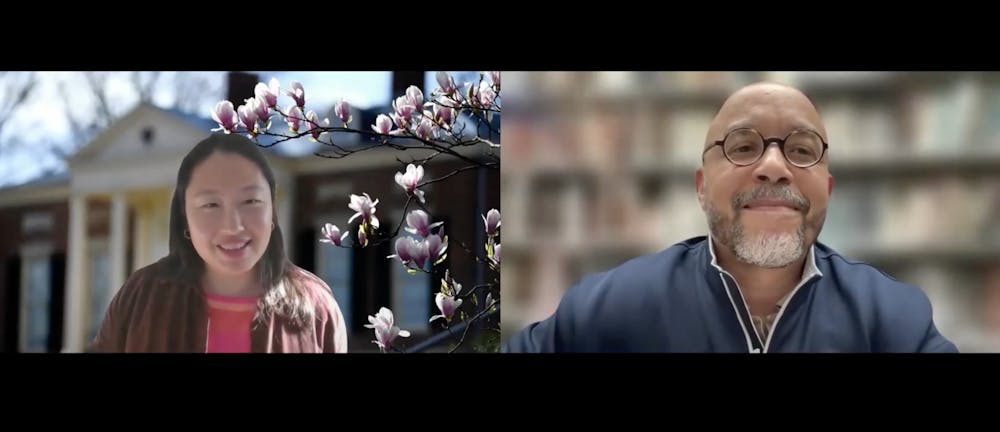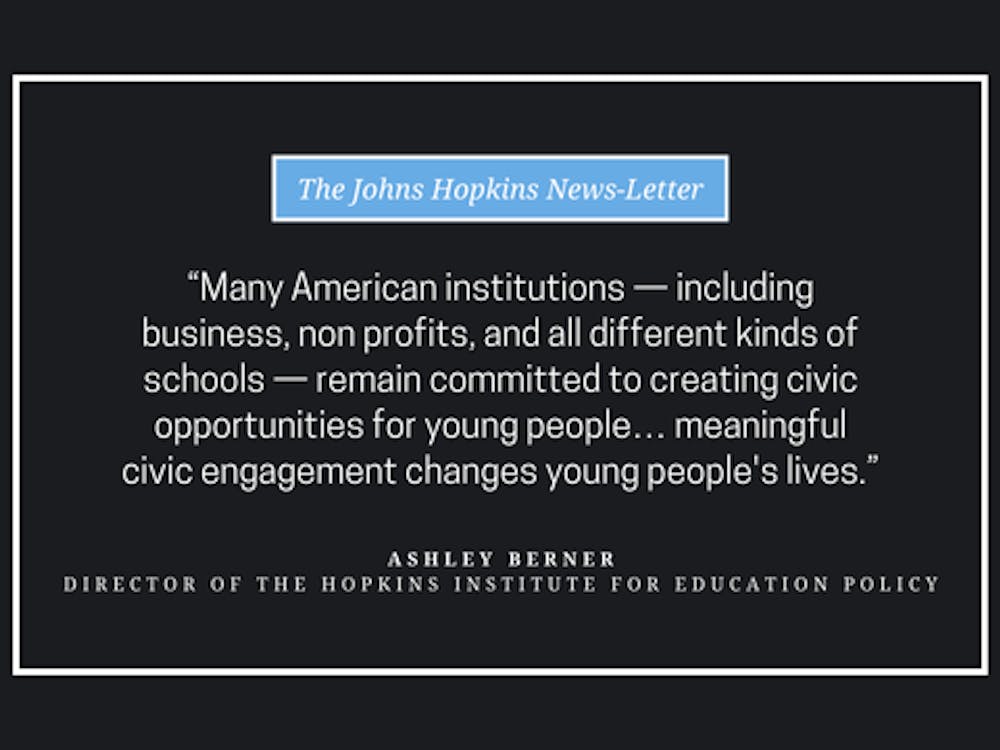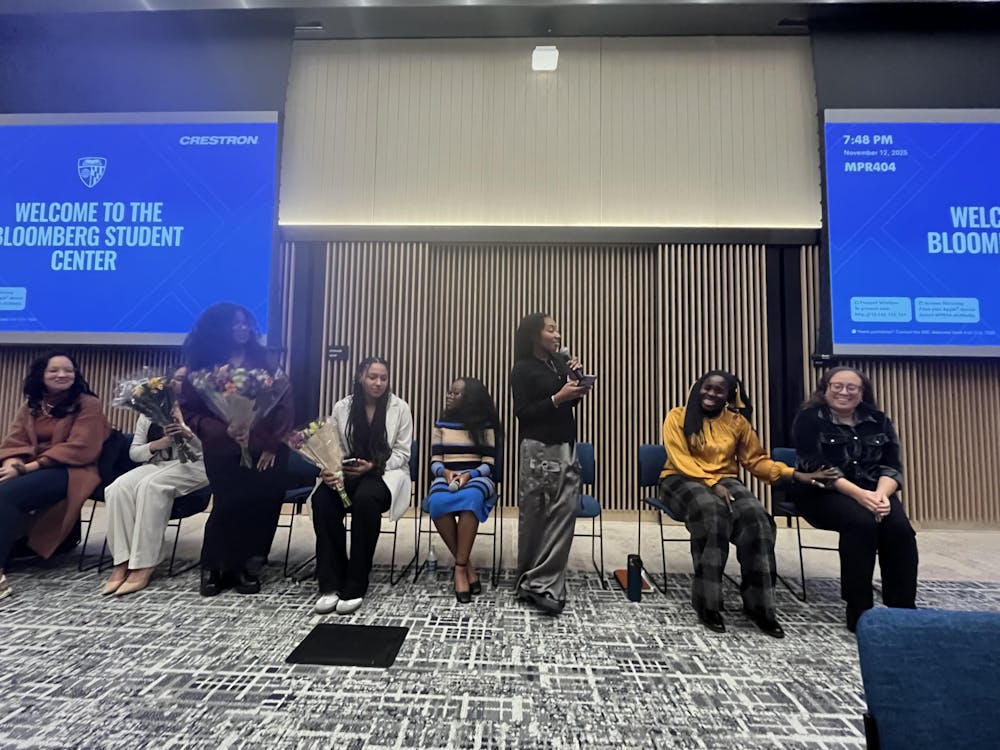On Oct. 2, the Krieger School of Arts and Sciences at Hopkins hosted a webinar with Lawrence Jackson as part of its Author Talks series. Nicole Choi, a 2025 graduate of the University’s Master of Arts (MA) in Writing program, was the moderator of the talk.
Choi introduced Jackson, the author of several award-winning books and the recipient of fellowships associated with the Guggenheim Foundation and the National Humanities Center. He is currently a Bloomberg Distinguished Professor of English and History and serves as the Director of the Billie Holiday Center for Liberation Arts. The center uses arts and archives to serve the Baltimore community with the primary goal of repairing the relationship between Hopkins and Baltimore’s black community.
Jackson described the influence that growing up in Baltimore has had on his professional life.
“I grew up in Baltimore and that’s the reason I founded the Billie Holiday Center for Liberation Arts,” he said. “We really want to be involved in reparative justice. We want to ensure that the University is a great partner with the historic sections of Baltimore.”
Jackson is currently working on a new book, The Sampler: A Man, a Church, and a People in Baltimore. He described it as a blend of historical biography and creative nonfiction. The book recounts the story of William Levington, the founder of St. James Episcopal Church, which Jackson attended as a child in Baltimore. While the narrative began as a biography, it became an examination of reconciliation after the return of a historic artifact.
St. James, originally St. James First African Protestant Episcopalian Church, was founded by Levington in 1824. According to Jackson, many details of Levington’s life remain a mystery; no known images of him exist.
Levington worked in Philadelphia in the 1810s alongside a book seller when he was about 20 years old. Jackson theorizes that Levington was likely influenced by Philadelphia as a center of educated Black Americans and the early movement of Black Christians. The author added that Levington crossed paths with the African American founders of Black Christianity, such as Richard Allen and Absalom Jones.
Following Jones and Peter Williams, Levington was one of the first African American ordained Episcopal priests. Jackson explained the significance of Levington’s inclusion in records of the clergy of Maryland: the ordination process included rigorous canonical exams in a time when many African Americans were not literate.
Moving to Baltimore, Maryland in 1824 was likely a shock for Levington, who had previously lived in the North where slavery was either outlawed or gradual emancipation was in place. Jackson emphasized the difficulty Levington would experience: starting a Black institution in a city where slavery still persisted. After creating the church, one of his major initiatives was convincing the freed Black Americans of Baltimore to allow enslaved Black Americans into the church.
The building of the church was made possible by James Bosley’s gift of land. In 1832, Levington made an embroidered sampler that he gave to Bosley, and the sampler remained in the Bosley household for more than 100 years before going to the Maryland Historical Society (now named Maryland Center for History and Culture) and, eventually, Colonial Williamsburg.
In the mid-1830s, when tension about the abolition movement was high, Levington and other church leaders published a statement in the newspaper disassociating the church from rebellion. However, Jackson and other experts believe churches like Levington’s were connected to the Underground Railroad.
“The [Ebenezer African Methodist Episcopal Church] congregation is pretty convinced that when that building was being built in the 1830s and 1840s, it definitively had hideaways, cellars and nooks that were used to secure people who were attempting to flee from enslavement,” said Jackson.
In 1837, Levington is believed to have died. The church continued with both Black and white ministers and deacons. George Bragg, a clergyman who established the Afro-American newspaper with John H. Murphy, took over a majority of the leadership roles.
More than a century later, in 1993, the church was struck by lightning and devastated by fire. It moved and rebuilt with a parish center. Today, it has a summer school, summer camp and food pantry.
“The church really redoubled its effort and commitment to that part of Baltimore,” said Jackson.
After Jackson finished his presentation, Choi read questions submitted before the webinar. The first asked what unexpected challenges the writer has encountered when writing about the history of a place and people by working with historical resources.
Jackson explained that he learned to be patient with his research and was surprised by how long it took to extract information from his sources. He said it is important to let archival sources marinate, since they are rich and vast. For The Sampler, he had information from 2017 in the back of his mind, but it took him a long time to digest and translate different pieces of evidence. He said it was difficult to learn that it might take years to understand a source.
“Whatever I write, the next generation will improve upon it because they will have a different lens but new materials,” he said.
Next, he was asked how he would assess the impact of the African American church in today’s political climate, given its pivotal role during emancipation and the civil rights movement, and what the change suggests about the evolving relationship between the Black church and contemporary Black political movements.
Jackson acknowledged that religious worship has declined sharply since the peak of civil rights movement in the 1960s. However, he believes the Black tradition of oratorical excellence is an important form of activism to maintain. He referred to the 2015 uprising after the killing of Freddie Gray, which was “almost exclusively secular” according to Jackson. However, he said the sermons given during Gray’s funeral were among the most impactful ways of spreading information.
Another audience member asked what the sampler symbolizes for the church and for African American communities in Baltimore in the context of reparative justice.
According to Jackson, Colonial Williamsburg was originally opposed to lending the sampler to the church. He worked with his son to create a petition and planned further actions to fight for it. By the time the petition was sent, Colonial Williamsburg’s stance had shifted. From that point on, staff were cooperative and even paid for the process of lending the sampler, including insuring it, reuniting it with the community for some time.





